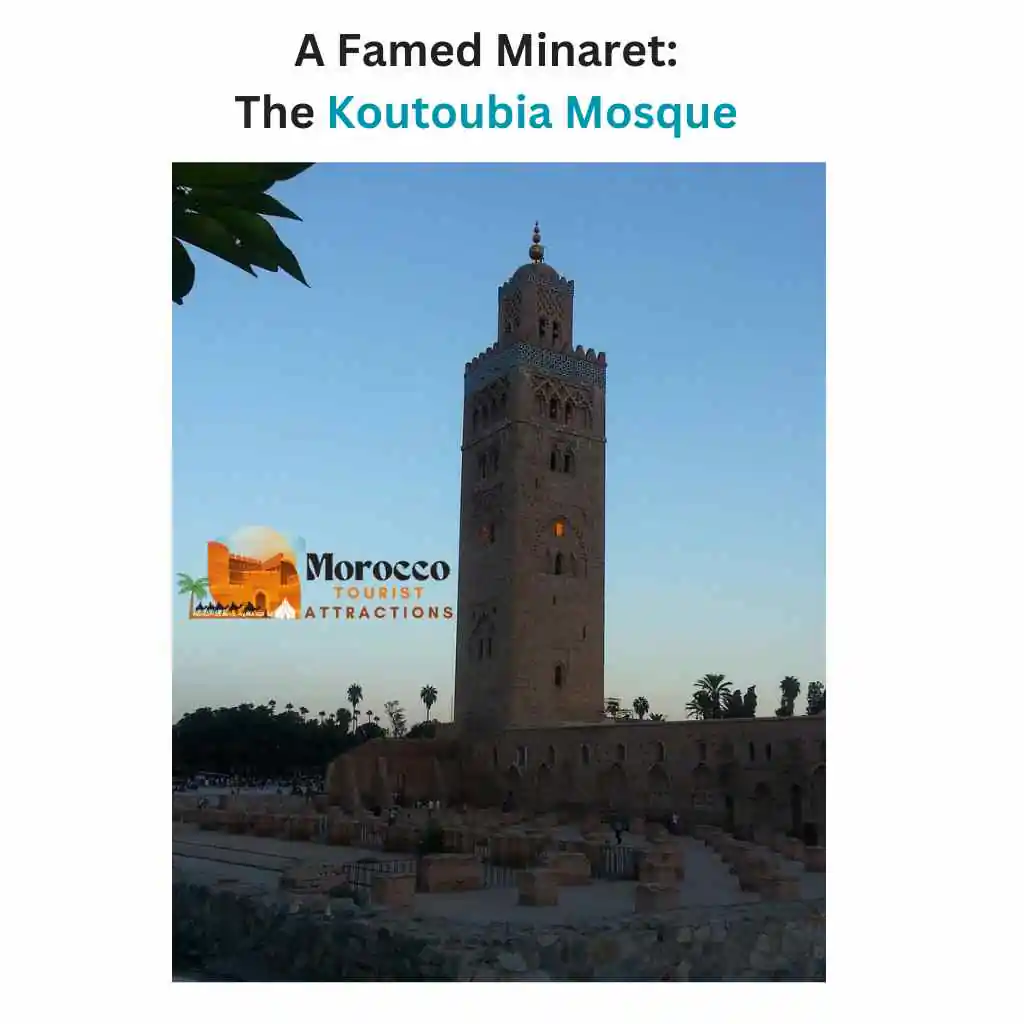
The Koutoubia Mosque in Marrakesh, Morocco, is impossible to miss. It dominates the wide expanse of the renowned public square, Jemma el-Fnaa. This is the light guiding you to the Red City from a distance.
Can you picture a caravan traversing Morocco in the distant past? A tower rises up in front of weary travelers. The muezzin sing-song chant can be heard drifting out to meet them during prayer time and in the hot, quiet desert air.
For more than 700 years, these sights and sounds have welcomed travelers as they got closer to Marrakesh. The Koutoubia Mosque, famous for its towering minaret, is located in the heart of the old city.
The Koutoubia Mosque History
The history of the Koutoubia Mosque is extensive. Its name is a translation of the Arabic word for “bookseller.” Manuscript and book sales were frequent, taking place in the mosque’s courtyard gardens and at various stalls. This is noteworthy because even in the 1200s, the Christian world was largely unaware of books.
Marrakesh served as the Almoravids capital during their time in charge of Morocco. On the same plot of land as the current Koutoubia Mosque, they constructed a mosque.
However, much of the city, including the mosque, was destroyed when the Almohads overthrew the Almoravid dynasty and took control of the kingdom. This was done on purpose because Almohad would never think to pray in a structure that his foe had built.
On the spot, a new mosque built during the Almohad Dynasty was constructed in what is now referred to as the “Almohad style.” In actuality, Sultan Abd el-Moumen, who ruled from 1133 to 1163 CE, left behind elements of the current mosque.
In order to fix a problem with the prayer niche’s direction toward Mecca, a second mosque was constructed. Koutoubia is a double mosque as a result. It is a 5,400-square-meter or 58,000-square-foot hall-type structure.
Within its walls, 25,000 Muslims are permitted to pray. The Koutoubia Mosque has 17 aisles and 112 columns. An ornately carved pulpit from Almoravid Sultan Ali ben Youssef was left over from the Almoravid mosque that had previously been destroyed.
This Moorish mosque is thought to be the height of Almohad craftsmanship. The arches, cupolas, and painted ceilings all have Spanish and Moorish influences. It was constructed during the rule of a single ruler, which is another characteristic of this mosque. The Great Mosque in Cordoba, another mosque of a similar size, took more than 200 years to complete.
A Famed Minaret: The Koutoubia Mosque Myth
Three gold spheres were purportedly going to be used to construct the minaret of the Koutoubia Mosque. Different theories exist regarding the significance of these spheres.
The three great Arab mosques—the Prophet Mosque in Medina, the Al-Haram Mosque in Mecca, and the Al-Aqsa Mosque in Jerusalem—could be represented by them. Or, it’s possible that they were intended to represent the three elements of life—fire, air, and water.
A fourth sphere was eventually added. According to the legend, during the holy month of Ramadan, the wife of Sultan Yacoub el-Mansour broke her fast early. She had her gold jewelry melted and turned into a fourth sphere as her penance. According to alternative myths, all four of the original spheres came from her jewelry.
The spheres that you can see atop the tower today are made of copper. The fate of the original spheres and whether they were actually made of gold in the first place is unknown. or if it was just another elaborate tale told by one of Marrakesh’s many storytellers.
The Koutoubia Mosque minaret
This unusual minaret, which Sultan el-Mansour had built, was a significant engineering achievement at the time it was finished. A ramp is constructed around the tower, which is 221 feet (69 meters) tall, to make it easier for the muezzin to climb to the top.
The interior is made up of six rooms stacked one on top of the other. The Giralda and Hassan minaret towers in Seville and Rabat, respectively, are replicas of the Koutoubia.
Today A Famed Minaret: The Koutoubia Mosque
The Koutoubia Mosque underwent essential renovations in 1997 to strengthen and modernize it.
The mosque, the minaret, the Koutbouia Gardens, and the nearby Cyber Park—the first public park in Morocco with free wifi—can all be seen from the outside by non-Muslim visitors. Like the majority of mosques in Morocco, the interior of the building is off-limits to non-Muslims.